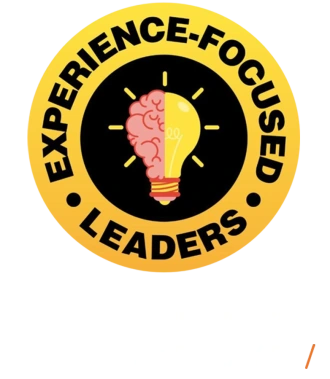Listen to the Podcast Episode on Your Favorite Platform

.svg.png)

The Complexity of Social Media Marketing
.png)
When Buffer ages started, the biggest issue for social media people was just getting content out there. Because it was something that people had to do besides other tens of jobs. And so it was just about saving the links, saying something very briefly about whatever the content was in the blog they were sharing, and putting it out there. Now it's like tens of people behind the scenes: the design, creative, copywriter, script editor. (Miruna Dragomir)
(00:01-06:52)
The speakers discuss the evolution and complexities of social media marketing, especially in the context of how businesses manage multiple platforms and brand channels.
Social media marketing has become increasingly complex with new platforms emerging regularly, such as TikTok and Instagram Reels. The complexity involves managing various types of content and coordinating a team of designers, copywriters and other creatives.
Planable helps marketing teams streamline their social media processes, making it easier to collaborate and maintain consistency across multiple channels. The tool is described metaphorically as a combination of Buffer and Asana, indicating its role in both scheduling and project management.
The importance of personalizing content for each platform while maintaining a cohesive strategy across all channels is emphasized. Managing multiple brands and their respective channels can lead to chaos without proper tools and organization.
Alex compares the complexity of managing multiple social media channels to managing a large family, underscoring the need for organization. Miruna talks about how Planable helps marketers by providing a structured way to handle the demands of modern social media marketing.
The discussion touches on the challenge of gaining attention in a crowded market of marketing technology companies. Miruna shares insights on how Planable uses its own tools and strategies to stand out and effectively market to their target audience.
.png)
Mastering Marketing Strategy
.png)
We try to stay away from quantity. You can do 10s of webinars, you can do ebooks and reports all day. But a lot of them can fail if you don't put in the work for research. And plan the distribution properly, which was a project of mine. (Miruna Dragomir)
(06:52-14:11)
Alex and Miruna delve into the intricacies of marketing strategies and the evolution of Planable's approach. Miruna shares her experiences and insights from her six years at Planable, focusing on trial-and-error learning, the importance of distribution and how to effectively target different audience segments.
Miruna reflects on her journey at Planable, where she experimented with various channels and tactics to find what works best. Initially, Planable focused heavily on content creation but realized the need for a robust distribution strategy to ensure effectiveness.
Miruna emphasizes that successful marketing requires more than just producing content. It demands proper research and planning for distribution. Planable now focuses on channels that drive results, such as SEO and PPC, and aims to create valuable content rather than simply high volumes of content.
Alex and Miruna discuss the common issue of producing content without a clear distribution plan, leading to insufficient awareness and engagement. Miruna underscores the necessity of having a detailed plan for distributing content across various channels to ensure it reaches the right audience.
Planable segments its audience into three categories: hot (active users), warm (engaged but not converted), and cold (new prospects). Miruna shares that they tailor their messaging for each segment to maximize relevance and impact.
Alex and Miruna explore how different content and messaging strategies are used for each audience segment. For example, introducing AI integration might be communicated differently to new prospects compared to existing users. Personalized messaging ensures that each audience group receives information that resonates with their current level of engagement and familiarity with Planable.
They discuss the complexity of addressing various user profiles within a company, from power users to occasional users. Miruna explains that their communication strategy varies to cater to the needs and levels of engagement of different users, ensuring that both champions and skeptics within a team see value in Planable.
.png)

Effective Marketing Strategies and Customer Retention
.png)
Product discovery will beat anything anytime: emails, experiences, webinars or any other type of content, as long as it lives in the product and is timed at the moment when the person needs it most. (Miruna Dragomir)
(14:11-21:20)
Miruna shares her insights on managing a diverse user base, the importance of tailored communication, and how to maintain customer engagement, especially during challenging economic times.
She explains the different user personas within Planable, such as creators and approvers. Creators are highly engaged with the product, while approvers use it less frequently. To avoid overwhelming less active users with information, communication is targeted primarily at the more engaged creators who can act as ambassadors within their organizations.
Planable adapts its communication strategy to suit the needs of different user personas. For example, approvers receive only essential information, usually within the app, to avoid unnecessary notifications. This approach ensures that users receive relevant information without feeling bombarded by excessive updates.
Alex and Miruna discuss the importance of continually educating users about the value and new features of Planable to prevent churn. Miruna acknowledges the challenge of getting users to adopt new features, especially when these changes require altering established workflows.
Miruna shares an example of introducing annotations and suggestions, similar to Google Docs, which faced slow adoption due to users’ ingrained habits. Planable aims to facilitate feature adoption by integrating guidance within the product, ensuring that users encounter help precisely when they need it.
In-product discovery is highlighted as a crucial method for driving feature adoption. Users are more likely to engage with new features if they are introduced contextually within the app. Miruna emphasizes that well-timed, in-product prompts are more effective than external campaigns in encouraging users to explore new functionalities.
Alex and Miruna discuss the impact of economic downturns on marketing budgets and how companies can adapt. Miruna advises focusing on demonstrating the value of the tool to users, particularly in times when budgets are tight. This involves ensuring that customers see tangible benefits that justify continued investment in Planable.
Miruna suggests that other companies facing similar challenges should prioritize in-product engagement and timely feature discovery. Maintaining strong communication with users and providing clear value propositions can help justify the investment in tools like Planable, even during economic recessions.
.png)
Strategies for Engaging Valuable Customers
.png)
In our experience with churn, what I can say is that focusing on churn itself can be demoralizing. Because that's the end point of the journey and that's usually where your hands are tied. (Miruna Dragomir)
(21:20-27:57)
Miruna explains that many of Planable's customers are agencies that experience significant fluctuations in their client portfolios. This variability can lead to involuntary churn, especially during economic recessions when marketing budgets are cut.
Planable aims to help agencies retain their clients by providing a smooth and effective user experience, making it more likely that clients will stay with the agency unless forced to cut budgets.
Miruna emphasizes the importance of focusing on the early stages of the customer journey to prevent churn. This involves ensuring that new users fully understand and utilize the product from the beginning. Planable has a dedicated onboarding squad that works on improving the onboarding process continuously. The goal is to set up workflows correctly from the start, which helps users see the value of the product and reduces the likelihood of churn.
In-product discovery is crucial for driving feature adoption. Miruna highlights that users are more likely to engage with new features if they are introduced contextually within the app, rather than through external campaigns. Well-timed, in-product prompts can effectively guide users to explore and adopt new functionalities.
Miruna shares an example of introducing annotations and suggestions in Planable, which faced slow adoption due to users' ingrained habits. Despite these features making workflows easier, users were slow to change their established methods. The adoption of new features requires educating users and integrating guidance within the product to ensure they encounter help at the right moment.
Alex and Miruna discuss the importance of targeting agencies, which represent a significant portion of Planable’s customer base. Agencies often face unique challenges and have specific needs. Planable tailors its content and campaigns to attract agency founders and decision-makers. This includes creating webinars and other content that addresses topics of interest to agencies, such as scaling a business or achieving successful exits.
Miruna explains that agencies, despite having tighter budgets, are valuable customers for Planable. The company focuses on creating content that resonates with agency founders and helps them see the benefits of using Planable. By highlighting success stories and providing practical insights, Planable aims to attract and retain agency customers, ensuring they understand the value of the product for their specific needs.
.png)

Developing Tools for Different Agency Needs
(27:57-34:38)
Miruna discusses how Planable caters to agencies that experience significant fluctuations in their client portfolios, a situation exacerbated during economic downturns. These fluctuations can lead to involuntary churn, which is when clients leave due to budget cuts rather than dissatisfaction.
Planable aims to assist agencies in retaining their clients by ensuring a smooth and effective user experience, making it more likely for clients to stay unless forced to cut budgets due to economic conditions.
Miruna highlights the creation of tools like the social media pricing calculator, designed to help beginner agencies and freelancers determine how much to charge for their services. This tool addresses a common pain point identified through extensive research with agency professionals.
By providing resources that meet the specific needs of different types of agencies, Planable enhances its value proposition and helps agencies navigate their pricing strategies more effectively.
The conversation shifts to the distinction between premium and beginner agencies. Miruna notes that Planable's most successful customers are premium agencies focused on social media. These agencies value the detailed, collaborative features of Planable that allow for meticulous content review and approval processes.
Planable's visual and collaboration-centric design is particularly appealing to agencies that prioritize high-quality, on-brand content.
Alex and Miruna discuss the pricing strategy for Planable. Despite the high value placed on the tool by premium agencies, Planable maintains an affordable pricing model. This is because agencies, known for their tight budgets and modest profit margins, need cost-effective solutions.
Planable's pricing increases with the scale of the agency, ensuring that larger agencies with more clients and complex needs pay more, while smaller agencies and freelancers can still afford to use the tool.
Miruna shares her views on experimenting with various marketing tactics and the importance of persistence. She emphasizes that while experimentation is crucial, it's equally important to give strategies enough time to show results before moving on.
Alex and Miruna discuss the balance between running multiple experiments and focusing on a few to avoid spreading resources too thin. Persistence in a few well-chosen strategies can often yield better results than constantly searching for the "perfect" channel.
.png)
Balancing Persistence and Experimentation in Marketing
.png)
Looking for that perfect channel is horrible. It's a horrible journey. I don't advise anyone to go on it because you're putting so much pressure on a tactic or on an experiment, you're probably gonna be disappointed. It's because we hear these success stories and it's because we see some channels that scale. Some channels are meant to scale. (Miruna Dragomir)
(34:38-41:34)
Alex and Miruna discuss the challenges and strategies involved in finding effective marketing channels, the importance of persistence in experiments, and how aligning business strategies with marketing efforts can lead to success.
Miruna cautions against the pursuit of the "perfect channel," highlighting the unrealistic pressure it creates. She explains that while some channels, like SEO, can scale effectively, others, such as influencer marketing, are harder to scale and require different expectations.
Miruna emphasizes the importance of committing adequate resources, both time and effort, to experiments. She notes that expecting early signs of success without proper investment can lead to disappointment and a series of inconclusive results.
Before starting an experiment, it's crucial to assess whether there are sufficient resources and commitment to see it through. For instance, social media experiments need long-term investment rather than short-term trials.
Miruna advises setting clear timelines and resource allocations for experiments to determine their success or failure. This approach helps avoid prematurely abandoning potentially valuable strategies.
Alex shares how choosing enjoyable and strategically aligned activities can lead to more sustainable efforts. He uses the example of their podcast, which aligns with their business and is also enjoyable, making it easier to persist.
Alex introduces the concept of "PodBooks," which transform static podcast content into interactive, navigable experiences. This innovative approach aligns with their business and has led to new opportunities, such as Event Books.
Miruna and Alex discuss the importance of using their own products in their marketing strategies. By aligning their business strategy with their go-to-market efforts, they can demonstrate the value of their products and services more effectively.
.png)

The value of being authentic in marketing efforts
.png)
I think that the best marketers are creating value. They're not trying to sell you something or get you into the products you don't need. (Alex Shevelenko)
(41:34-44:47)
Miruna explains that as marketers marketing to other marketers, they often have valuable insights and expertise in-house that they may not fully recognize. Instead of looking outside for content inspiration, they leverage their internal knowledge.
Miruna talks about the concept of "dog fooding" (using your own product) and "building in public." By sharing the behind-the-scenes details of their marketing campaigns, they provide transparency and authenticity, which resonates well with their audience.
An example is their SEO team hosting a webinar to discuss their SEO strategies. This approach not only showcases their expertise but also builds trust with their audience. The webinar was highly successful, attracting 300 registrants overnight.
Alex highlights that building in public forces marketers to be intellectually honest and focus on delivering real value to customers, rather than just trying to sell something. The best marketers aim to create value, ensuring their efforts are aligned with customer needs and interests.
Alex acknowledges Miruna’s transition from working with well-known brands to establishing a leading brand in her domain. He praises her for successfully navigating this change and contributing significantly to Planable’s growth.
Miruna invites the audience to connect with her on LinkedIn and to explore Planable at planable.io. She mentions they are currently working on revamping their homepage, indicating ongoing improvements and engagement with their users.
.png)
Check the the episode's Transcript (AI-generated) HERE.
Other Episodes

Godard Abel | CEO of G2
S 01 | Ep 6 Where You Go for Software: Reach Your Peak


Dean Stocker | CEO of Alteryx
S 01 | Ep 8 Turning Your Customers Into Your Biggest Champions


Peter Fader | Co-Founder of ThetaCLV
S 01 | Ep 10 Turning Your Marketing Into Dollars

Author

Experience-focused Leaders is the #1 Multimedia Podcast! We talk to senior business & tech leaders about the experiences that move forward organizations, customers and society at large. True to form, we mix audio, video, web and eBook formats to turn these authentic conversations into personalized nuggets you'll remember & use.



.png)
